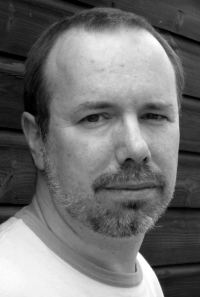Wednesday, August 27, 2008
Royal Concert Hall reading & Then Play Long
I'm reading at the Royal Concert Hall in Nottingham at 7.15pm on September 10th, previewing my new novel as part of the Nottingham Writers Studio 'Word of Mouth' evening (more event info here). I'm reading with Wayne Burrows, Matt Hurst, Jon MacGregor, Richard Pilgrim, Michael Pinchbeck, Alicja Shaw and Nick Wood. I'm blogging about it now as this site is now taking its summer break, with a ridiculous number of books. Doubtless I'll write about the ones I get through on my return.
If you share my preoccupation with popular music and its history, you might want to check out an incredible new project by Marcello Carlin. Then Play Long examines every number one album since the beginnings of the album chart, beginning with the album that (I strongly suspect) was playing when I was conceived. This project could easily take twenty years and all credit to Marcello, the most insightful music critic I know, for starting it up. You'll find me hanging around in the comments box from time to time.
If you share my preoccupation with popular music and its history, you might want to check out an incredible new project by Marcello Carlin. Then Play Long examines every number one album since the beginnings of the album chart, beginning with the album that (I strongly suspect) was playing when I was conceived. This project could easily take twenty years and all credit to Marcello, the most insightful music critic I know, for starting it up. You'll find me hanging around in the comments box from time to time.
Thursday, August 21, 2008
Meet Bob
This is Bob the scarecrow, created this morning with my nephews Harry and Michael, and named after one of my favourite writers, Robert Westall (author of The Scarecrows). Bob is now guarding the potato patch at the back of our allotment. Behind him you can see the garages where we've been playing a lot of table tennis during Michael and Harry's visit. Photos by their Auntie Sue.
Sunday, August 17, 2008
Never mind a scarecrow, I want one of these for the allotment
24 hours in Liverpool
Just back from 24 hours in the European Capital of Culture where Michael Murphy (left) was launching his new Shoestring pamphlet Allotments and Deryn Rees-Jones launched her new pamphlet Falls And Finds. Michael's pamphlet is full of poems written during his residency at the National Wildflower Centre, where the launch took place and where, after a fine reading by the couple, we had a good walk amongst the wild flowers, scarecrows and quirky ephemera. The evening also gave us a chance to catch up with old friends and remind ourselves of how loquacious LIverpool taxi drivers are, a much better ad for the city than the building site that surrounded our hard-to-find hotel. Never mind covering up the eyesores with hoardings, how about a few signs to help people locate where they're staying, like they have in most European cities? I grew up near Liverpool and it's great to see the city thriving, but our favourite destination was a few miles out of the city, on Crosby beach, where we spent a sunny afternoon looking at Anthony Gormley's 'Another Place' figures in the shifting sands. Magic. I'll post some photos above.
Thursday, August 14, 2008
For 'Nigel', read 'Adrian'

I'm writing this in the basement of the University of Leicester's David Wilson Library, where there's an excellent exhibition about the work of Sue Townsend, who recently donated her archives to the university (and was awarded a fellowship). Half of the small exhibition is about the origins of her best known character, Adrian Mole. In early versions of the Mole sagas, he was called 'Nigel' (and, briefly, 'Malcolm'). The reason for the change was the likelihood of confusion with Nigel Molesworth, Ronald Searle's anarchic schoolboy diarist. I remember reading the first Mole book back when it appeared in paperback in 1984, my partner and I laughing aloud on the bus. We were training to be teachers, teaching boys Adrian's age, which made it even funnier, but the stories were (and remain) mainly aimed at adults, who read between the lines.
Sue became the best selling UK author of the 80's. The exhibition charts Adrian's origins well, and is worth negotiating your way into the library to see. I was privileged to get a pass to look at the entire Townsend archive, and have spent the last hour looking through the original manuscripts, correspondence and publicity material related to 'The Secret Diary of Adrian Mole', which began life in a small magazine then became a BBC radio play. The journey into the making of the first book is fascinating. The collection contains Sue's literary, personal and business papers, including correspondence with publishers, agents and contemporary writers; press and magazine cuttings of reviews and interviews; and holograph manuscripts, typescripts, notebooks, printers' proofs and illustrations for books, stage plays, screenplays and articles. Also there are the writer's personal papers include family photographs, personal correspondence, desk diaries and ephemera. Amongst all this stuff, on the back of something else, I came across a list of possible names for the hero of Sue's first book. Nigel Mole comes first. ("Mole' was evidently the name of a favourite teacher, nothing to do with Molesworth - who was, incidentally, a hero of my youth.) Second in the list is 'Adrian Vole'. I'm always telling students that names are important. How much difference would her calling the hero Adrian 'Vole' have made? Quite a lot, I reckon.
